the scandal of susan sontag
Gender and Culture
GENDER AND CULTURE
A Series of Columbia University Press
Nancy K. Miller and Victoria Rosner, Series Editors
A complete list of works in this series follows the index.
the scandal of susan sontag
EDITED BY
Barbara Ching and Jennifer A. Wagner-Lawlor
 Columbia University Press New York
Columbia University Press New York
Columbia University Press
Publishers Since 1893
New York Chichester, West Sussex
cup.columbia.edu
Copyright 2009 Columbia University Press
All rights reserved
ISBN 978-0-231-52045-4
Chapter 12 was originally published in Artforum 43, no. 7 (March 2005): 19597, as Perspicuous Consumption, by Wayne Koestenbaum, Artforum, March 2005.
Library of Congress Cataloging-in-Publication Data
The scandal of Susan Sontag/edited by Barbara Ching and Jennifer A. Wagner-Lawlor.
p. cm.(Gender and culture)
Includes bibliographical references and index.
ISBN 978-0-231-14916-7 (cloth: alk. paper) ISBN 978-0-231-14917-4 (pbk.: alk. paper) ISBN 978-0-231-52045-4 (e-book)
1. Sontag, Susan, 19332004Criticism and interpretation. I. Ching, Barbara, 1958 II. Wagner-Lawlor, Jennifer A. III. Title. IV. Series.
PS3569.O6547Z878 2009
818.5409dc22
2009033601
A Columbia University Press E-book.
CUP would be pleased to hear about your reading experience with this e-book at .
References to Internet Web sites (URLs) were accurate at the time of writing. Neither the author nor Columbia University Press is responsible for URLs that may have expired or changed since the manuscript was prepared.
Contents
The editors would like to thank all the contributors for their enthusiasm for this project and for their tremendous cooperation in keeping up with our tight timetable. More importantly, we are grateful for the opportunity to collaborate on the legacy of Susan Sontag, a writer and artist whose range of work exceeds the grasp of any one of us. This project began in Puebla, Mexico, for the American Comparative Literature Conference in 2007, where Terry Castle, Leslie Luebbers, Nancy Miller, Greg Peariso, Julia Walker, and ourselves, spent two days talking and thinking together about the life and work of Susan Sontag. We are grateful to Nancy Miller in particular for her enthusiasm about the idea of compiling a volume including these and other new essays on Sontag. Her support and advice along with that of her Gender and Culture series coeditor, Victoria Rosner, made possible the volume that now exists. Jennifer Crewe and her assistant, Afua Adusei, were wonderfully patient with our many questions. John Nale compiled the index with care and intelligence.
Barbara Ching is grateful to the UCLA libraries for a James and Sylvia Thayer Short-Term Research Fellowship to use the Sontag archive in the Special Collections Department of the Charles E. Young Research Library at UCLA. The librarians there made my work a pleasure. The College of Arts and Sciences at the University of Memphis made much of my research on Sontag possible through a Dunavant Professorship and a professional-development assignment.
Jennifer Wagner-Lawlor would like to thank the College of the Liberal Arts at the Pennsylvania State University for its generous research support, which has underwritten the permissions cost of several illustrations.
The Ching and Lawlor families provided support of all kinds and deserve many thanks. This collection would never have been completed without them.
We have made every effort to identify the photographers and copyright holders for the images reproduced in this volume. We are especially grateful to photographers Michael Coupon and Mathieu Bourgois for their generosity in granting permission to use their photos of Sontag; also to Lorraine Adams, Jennifer Buonocore, and Paula Mazotta at VAGA (Visual Artists and Galleries Association), for helping with the rights for Joseph Cornells The Ellipsian; Harriet Spurlin, executor of the estate of photographer Victor Thomas; and finally, Stephen Koch, director of the Peter Hujar Archive, LLC.
| Aids and Its Metaphors (1989) | AM |
| Against Interpretation (1966) | AI |
| Alice in Bed (1993) | AB |
| At the Same Time (2007) | AST |
| Conversations with Susan Sontag (ed. Poague, 1995) | CSS |
| I, Etcetera (1978) | IE |
| Illness as Metaphor (1978) | IM |
| In America (2000) | IA |
| On Photography (1977) | OP |
| Regarding the Pain of Others (2003) | RP |
| Styles of Radical Will (1969) | SRW |
| Swimming in a Sea of Death (Rieff, 2008) | SSD |
| Under the Sign of Saturn (1980) | USS |
| The Volcano Lover (1992) | VL |
| Where the Stress Falls (2001) | WSF |
Note that citations to AM and IM are to the collected volume Illness as Metaphor and Aids and Its Metaphors (New York: Anchor Books, 1989).
| . | Actress Pernilla Alfeldt as Sontag look-alike in Brother Carl |
| . | Susan Sontags high-school yearbook photo |
| . | Absolut Evidence, Absolut Vodka ad |
| . | Sontag and Rieff show off their western-wear collection |
| . | Sontag and Rieff, Notes on Optimism |
| . | Chinese wear |
| . | Sontag turns her back on New York City |
| . | The beautiful young face |
| . | Joseph Cornell, The Ellipsian (1966) |
Susan Sontag (19332004) holds a unique status in the United States as both a female public intellectual and a celebrity, an unlikely combination that garnered her both scorn and adulation. Refusing the shelter and specialization of the academy, she proclaimed an interest in everything and demonstrated it by working in theater, literature, and film and by writing about photography, painting, dance, travel, illness, and politics. She earned many professional laurelsthe MacArthur Foundation genius grant in 1990 and initiation into lOrdre des Arts et des Lettres in France, to name only two. At the same time, Sontags volatile blend of art and activism inflamed many critics, most notably after her response to the September 11, 2001, attacks on Manhattans World Trade Center and the Pentagon and to the American foreign policies, including war, that followed. Likewise, her penchant for the magisterial statement, combined with her readiness to revise her own ideas, left her open to charges of empty trendiness and attention seeking.
Four years after her death, Sontag retains her power to provoke. The twelve essays that make up this volume not only ask how Sontag kindled, and even created, an aura of awe and scandal during her forty years in the public eye; they also articulate and advance the ongoing debates about Sontags achievements and legacy. From her first journal pieces to her last, posthumously published essays, she entered into age-old debates about the status of art and what, if anything, art does in the world. Sontag believed in art as a potential and ideally potent encounter with truth and beauty. She supplemented that traditional reverence with a devotion to what she called seriousness, a quality linking the aesthetic, the ethical, and the political in an attentive persons experience of the world. She explored the role of art not only in essays on a range of subjects but also through her own creative work in various genres.
Next page


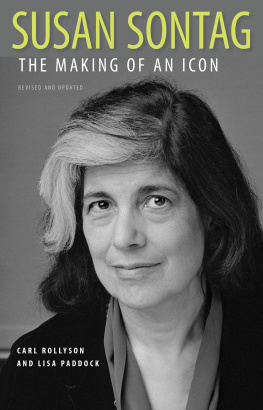
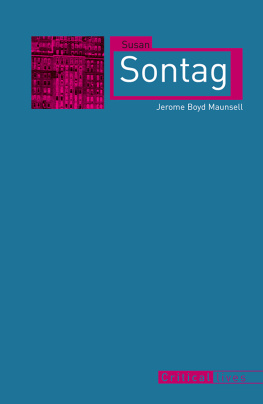

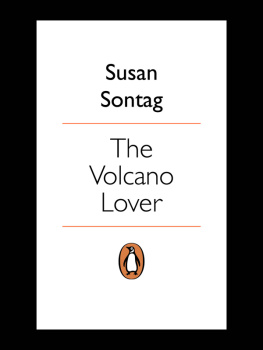
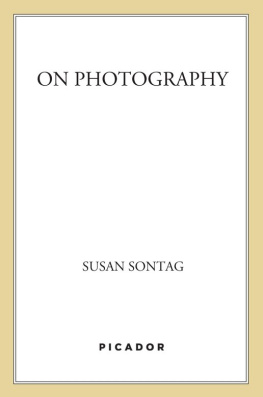

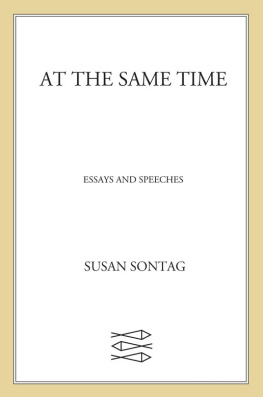
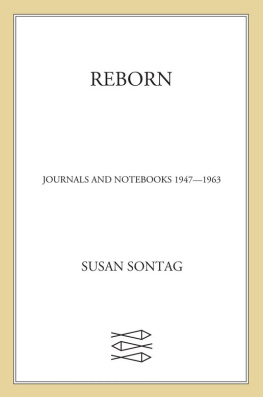
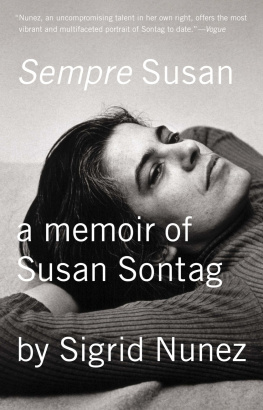
 Columbia University Press New York
Columbia University Press New York